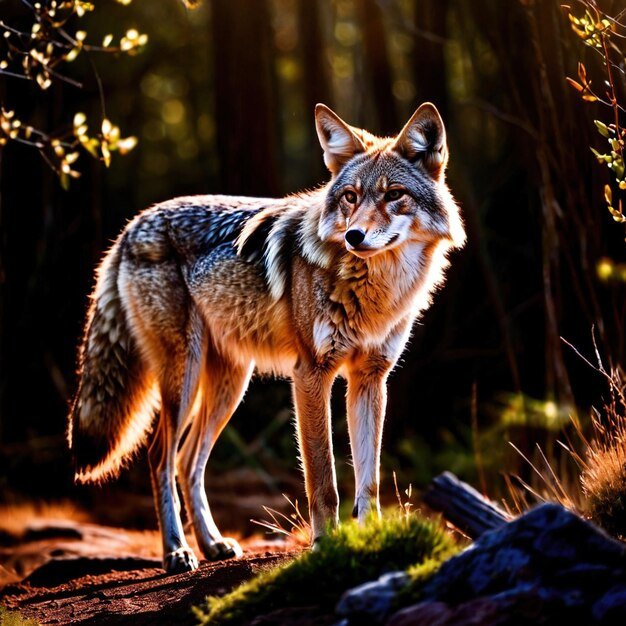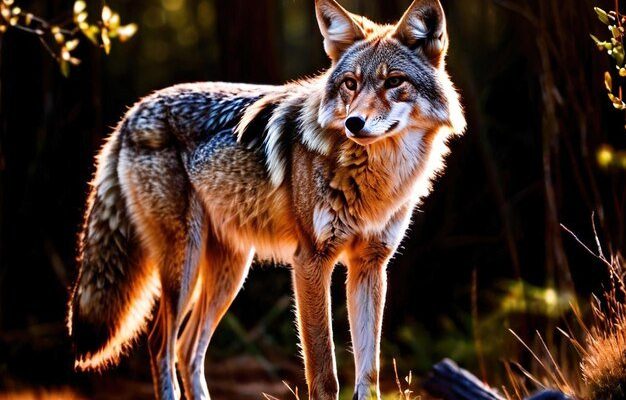
Imagine a world without coyotes. It might seem quieter at first, but soon you’d notice some unsettling changes. Coyotes are often called “nature’s scavengers” because they help clean up the environment by consuming the remains of dead animals. Their diverse diet and strategic hunting skills keep prey populations in check, which can help the entire ecosystem thrive. Here’s the thing: understanding the coyote’s role can give us insights into maintaining biodiversity, and that’s something we should all care about.
The Coyote’s Diet and Foraging Habits
Coyotes are *opportunistic feeders*, meaning they’ll eat just about anything. This flexibility is one of the reasons they thrive in various environments, from deserts to forests. You might be wondering, what exactly does a coyote eat?
- Small mammals like rabbits and rodents
- Insects and fruit when other food is scarce
- Carrion, or the remains of dead animals, which they help dispose of
By consuming these different food sources, coyotes help regulate the populations of small mammals. This is crucial because, without natural predators like coyotes, certain species could overpopulate. Think of it as nature’s way of keeping things balanced!
Additionally, coyotes are also known to scavenge on carcasses, which not only provides them sustenance but also helps reduce the spread of disease. By cleaning up these dead animals, coyotes perform an invaluable cleanup service for the ecosystem.
The Role of Coyotes in Population Control
Coyotes are key players in controlling the populations of their prey. By regulating how many rabbits, rodents, and other small mammals thrive, they help maintain a healthy balance in their habitats. Here’s how it works:
When coyote populations are healthy, they keep small mammal populations in check. This relationship ensures that these animals don’t overconsume vegetation, which can lead to habitat degradation. Without coyotes, you could see a surge in these populations, which can harm plants and other wildlife.
For instance, too many rabbits can lead to overgrazing. This, in turn, can affect other species that rely on the same vegetation for food or shelter. So, when coyotes hunt and feed, they’re not just looking out for themselves; they’re protecting the entire ecosystem.
The Coyote and Climate Adaptation
Coyotes are incredibly adaptable animals. They thrive in diverse environments, including urban areas. Their ability to adjust to changing conditions makes them essential for ecological resilience.
For example, in cities, coyotes have learned to navigate human environments, often finding food in trash or even hunting rodents that thrive in urban settings. This adaptability helps maintain natural predator-prey dynamics, even in areas heavily influenced by humans.
It’s fascinating to think about how these clever creatures have evolved their behaviors to survive alongside us. Their ability to adapt to new challenges is something we can learn from as we face our own environmental issues.
Coyotes as Keystone Species
Coyotes are often referred to as *keystone species*. This means they have a disproportionately large effect on their environment relative to their abundance. Simply put, when coyotes are present, the ecosystem is healthier and more balanced.
For example, a study in Yellowstone National Park found that when coyotes were removed, the populations of rabbits and rodents surged, leading to overgrazing. This overgrazing then damaged the landscape and affected many other species, from plants to larger predators and herbivores.
So, when we talk about coyote conservation, we’re not just talking about saving one species; we’re talking about helping the entire ecosystem. The health of various plants and animals depends on the presence of coyotes.
The Relationship Between Coyotes and Other Wildlife
Coyotes don’t exist in isolation; they are part of a larger network of wildlife. Their interactions with other species are crucial for maintaining balance within the ecosystem.
Interestingly, coyotes can also compete with other predators, like foxes and bobcats, for food. This competitive dynamic helps regulate those populations as well. If coyotes are abundant, they might keep fox numbers lower, which can help protect smaller prey.
In some cases, coyotes may even help larger predators by controlling smaller prey populations. This means that the presence of coyotes benefits not only themselves but also the entire food web.
The Importance of Coyote Conservation
With all of the roles that coyotes play in their ecosystems, it’s vital that we consider their conservation. Urban expansion and habitat destruction threaten their populations, which can lead to a cascade of negative effects on the environment.
Protecting coyotes means protecting the health of our ecosystems. Conservation efforts can include creating wildlife corridors or preserving natural habitats. By promoting coexistence between humans and coyotes, we can ensure their survival and the health of the environment.
Here’s a thought: when you see a coyote, instead of viewing it as a nuisance, think of it as an important piece of a complex puzzle. By taking care of these animals, we help to preserve the balance of nature.
Coyotes are more than just familiar figures in our landscape; they are vital components of our ecosystems. From controlling prey populations to adapting to changing environments, their influence is far-reaching. By understanding their role, we foster a deeper appreciation for nature and the intricate webs of life in which we all exist.
Let’s remember to protect these clever canines. Their presence keeps our ecosystems healthy, diverse, and resilient. The next time you spot a coyote, take a moment to appreciate the essential role it plays in the balance of nature. Together, we can ensure that these amazing animals continue to thrive for generations to come.

